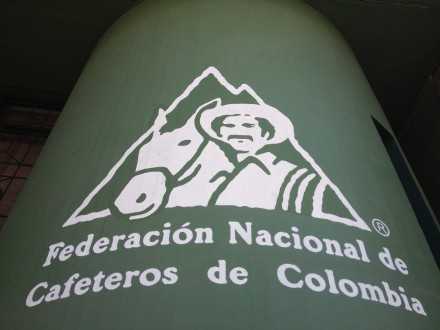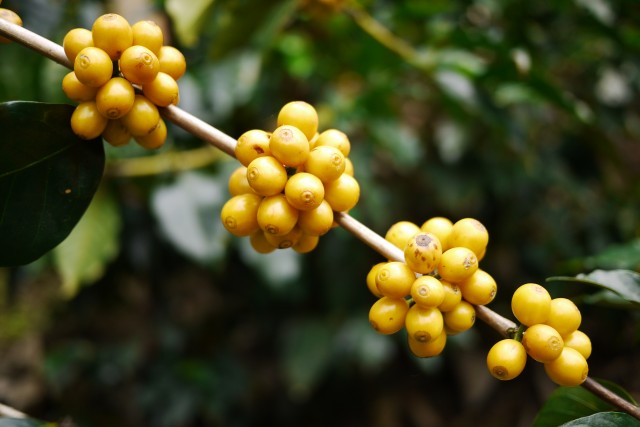Credit – The first strike appeared to win an important concession from Banco Agrario, the state-owned bank that finances Colombia’s coffee renovation program and delivers other financial services to the country’s coffee growers. The agreement reached in March called for a one-year grace period for all current debt held by the country’s coffee farmers and a restructuring of that debt over four years. Another committee was created to work out the details of this arrangement. According to strike leaders, loans have been restructured in ways that are not giving growers the relief they need.
Last week, President Juan Manuel Santos acknowledged that the country’s agriculture sector is mired in a deep structural crisis from which it will not emerge quickly or easily. He called for a “national pact” to make Colombian agriculture thrive again, and invited representatives of striking farmer groups to work with his government to begin the process later this month. As of this writing, the strike continues and coffee sector representatives remain locked in negotiations with the government around these and other issues. And all this is happening against the backdrop of an ongoing initiative to reform the country’s coffee institutions.
The politics of institutional reform.
Colombia’s National Coffee Growers Federation has advanced the interests of the country’s coffee growers since 1927. The Federation is the country’s largest coffee exporter; its operations are funded by a tax on coffee exports and its own export earnings. With these resources, it delivers agronomic and financial and commercial services to more than a half-million coffee growers. Its world-class research institute CENICAFE is leading innovations in coffee breeding and processing. It guarantees to purchase coffee from all Colombia’s coffee farmers, whether they are members of not, stabilizing prices and ensuring a high percentage of the coffee’s export prices reaches farmers. It is the intellectual author of the legendary Juan Valdez ad campaign and has made Colombia synonymous with quality for most of the world’s coffee drinkers. It has built roads and schools and hospitals in the coffeelands. It is an essential part of the country’s identity and popular culture, featured in Café con Aroma de Mujer, one of the most successful telenovelas in Latin America’s history, and a popular tongue-in-cheek book citing Juan Valdez and the Federation as evidence that “God is Colombian.” At the height of its powers, the Federación owned an airline. And a bank. And a shipping company. And financial corporations. And real estate. Although coffee’s importance to Colombia’s national economy declined steadily since the Federation was established, when it represented around 80 percent of Colombia’s exports, the Federation retained power, influence and prestige.
But because the Federation has taken such good care of Colombia’s coffee growers, it is also the most popular target of popular discontent when things go wrong. And things went terribly wrong in 2001 when world coffee prices collapsed. Coffee growers turned to the Federation for support and also began to look more critically at its performance. In the wake of the coffee price crisis, Colombia’s government appointed a high-level commission—la Comisión para el Ajuste de la Institucionalidad Cafetera—to conduct a thorough review of the country’s coffee institutions and recommend measures to make those institutions more effective and Colombia’s coffee sector more competitive.
The Commission’s mandate focused on the Federation and its financial arm, the Fondo Nacional de Café. Its final report, El Café, Capital Social Estratégico, is not just enlightening—it is also a great read. Its authors acknowledge the enormous benefits Colombia’s coffee institutions have generated for the country’s farmers, then level withering critique of their structure and management, advancing a series of sound recommendations for reforms to make them more transparent, efficient and competitive.
(The report, available only in Spanish, is long, but the 15-page Executive Summary ably summarizes its key points. For English-only readers, there is Daniele Giovannucci’s outstanding Colombia Coffee Sector Study, also published in 2002, which incorporates the key points of the Commission’s review and recommendations in a broader analysis. It was written in 2002, but much of its analysis resonates today. A must-read for anyone who wants a deeper understanding of Colombia’s coffee sector.)
Over the past decade, the Commission’s report has been in many ways a strategic roadmap for Colombia’s coffee institutions, which have incorporated some of its specific recommendations. The most visible of these was undoubtedly the emergence and global expansion of the Juan Valdez Café chain. But much of the work prescribed by the Commission remains unfinished, a detail not lost on the organizers of this year’s coffee strikes.

















